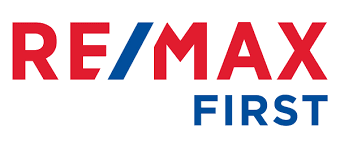- What it is: This rate helps estimate how much money you could make from an investment property. It’s found by dividing the property’s net operating income by its purchase price.
- Why it matters: It’s a way to compare different investment choices and see which one might be more profitable.
- What it is: ROI is like a percentage that shows how much profit you make compared to what you spent on the property.
- Why it matters: This percentage helps you decide which investment is more likely to make you money.
- What it is: ROE is about figuring out how much cash you’d get if you sold your property today.
- Why it matters: It’s a great tool for understanding if your investment is paying off.
- What it is: DSR helps lenders figure out if you have enough money coming in to cover your mortgage.
- Why it matters: Lenders usually want a 1.2 ratio, meaning your income is 1.2 times more than what you owe for your mortgage.
Return on Equity is a vital metric, especially for savvy real estate investors. It tells you how well your investment is doing by looking at the cash you’d get if you sold your property. Let’s break it down further:
What is Equity?Equity is simply the cash you’d pocket if you sold your property right now.
How ROE Changes Over Time:When you first buy a property, your ROE is high because of leverage. Leverage is like a secret weapon in real estate—it helps you make more money with less of your own cash.
For example, if you put down 25% to buy a property, your leverage is 4 times (1 divided by 25%). So, if your property goes up by 3%, your gain is actually 12% (3% multiplied by 4).
As you pay down your mortgage and build equity, your leverage goes down, and so does your ROE. Over a 30-year mortgage, ROE might start at 18% but settle around 10% when the mortgage is paid off.
Components of ROE:- Cash Return on Equity: This part usually stays steady if rents keep up with the property’s value.
- Principal Paydown: This percentage decreases over time because your equity gain outpaces it.
- Appreciation Return on Equity: This becomes a big deal as your property value goes up and your leverage decreases.
An example involving the sale of a rental property, the decision was guided by Return on Equity (ROE). The property, initially purchased for $110,000 as a personal residence, was converted into a rental when the owners moved to a larger place.
When the tenant moved out, the property’s value had surged to $225,000, and the mortgage balance stood at $80,000. Calculating ROE involved considering cash flow, principal paydown, and appreciation. Cash flow was estimated at $5,000 per year, principal paydown at $2,000, and a conservative 3-5% annual appreciation on the property’s value.
Total annual return = $5,000 (cash flow) + $2,000 (principal pay down) + $6,750 (3% appreciation on $225,000 value) = $13,750
Return on Equity (ROE) = $13,750 / $145,000 = 9.5%
With a projected ROE of less than 10%, the owners decided to sell the property. They believed that by reinvesting the proceeds in private equity commercial real estate deals, they could achieve a better return of 12-15%, without the complexities of managing tenants and property maintenance.
This example highlights the importance of regularly reassessing property holdings, challenging the notion of “buy and hold forever” in favor of becoming a smarter, more strategic investor.
Relying solely on property appreciation for returns can be risky. While appreciation contributes to overall returns, it’s crucial not to hinge your investment strategy solely on this factor. If you invest in a property with little to no cash flow, expecting appreciation to compensate, you’re essentially gambling rather than investing.
Many seasoned investors view appreciation as the “icing on the cake.” A prudent rule is to ensure that a rental property generates positive cash flow, regardless of its location or past appreciation. This ensures a more stable and reliable investment.
Leverage, while capable of significantly boosting returns, also poses risks. It’s a double-edged sword that can lead to substantial losses if not managed carefully. If market conditions shift and there’s inadequate cash flow to cover mortgage payments, selling at a loss or facing foreclosure might become unavoidable.
Opting for cash flow may result in more predictable but steady returns. Real estate investment is a long-term commitment, not a shortcut to quick wealth. Prioritizing stable returns through cash flow aligns with a prudent and sustainable approach to real estate investment.
While considering options for property investing, the idea of refinancing to extract equity and increase Return on Equity (ROE) can be explored. A potential new loan at a particular Loan-to-Value (LTV) ratio can allow for extracting equity. However, be cautious, as such a move could erode cash flow by raising the mortgage payment.
The aversion to over-leveraging stems from the desire to avoid zero or negative cash flow, a lesson learned from the 2008 market downturn. The fear is grounded in the understanding that excessive leverage led many to lose everything during that period. Rather than risking a setback and starting anew, the preference is to build wealth gradually over a longer period, prioritizing stability and longevity over the allure of rapid returns on paper.

